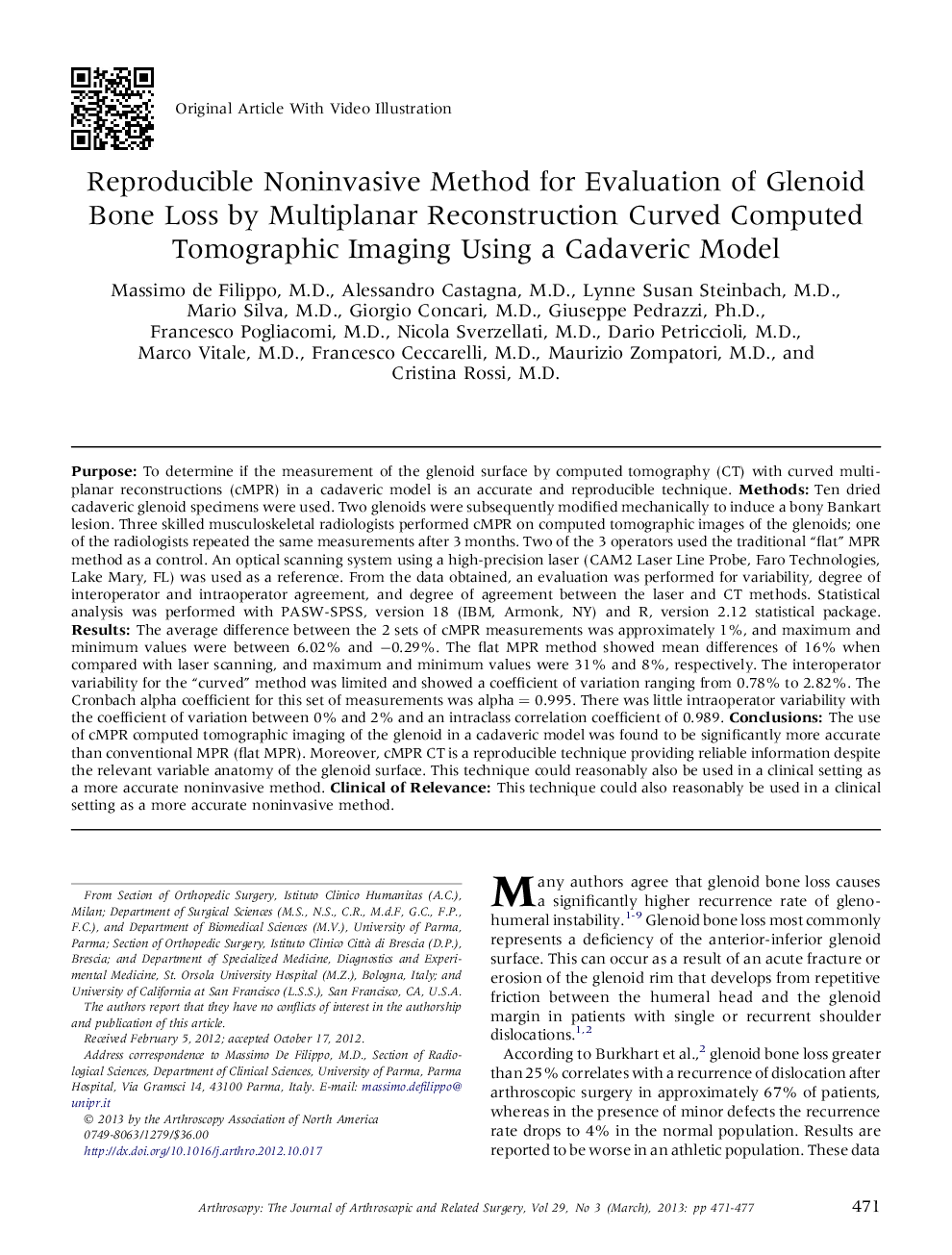| Article ID | Journal | Published Year | Pages | File Type |
|---|---|---|---|---|
| 4044073 | Arthroscopy: The Journal of Arthroscopic & Related Surgery | 2013 | 7 Pages |
PurposeTo determine if the measurement of the glenoid surface by computed tomography (CT) with curved multiplanar reconstructions (cMPR) in a cadaveric model is an accurate and reproducible technique.MethodsTen dried cadaveric glenoid specimens were used. Two glenoids were subsequently modified mechanically to induce a bony Bankart lesion. Three skilled musculoskeletal radiologists performed cMPR on computed tomographic images of the glenoids; one of the radiologists repeated the same measurements after 3 months. Two of the 3 operators used the traditional “flat” MPR method as a control. An optical scanning system using a high-precision laser (CAM2 Laser Line Probe, Faro Technologies, Lake Mary, FL) was used as a reference. From the data obtained, an evaluation was performed for variability, degree of interoperator and intraoperator agreement, and degree of agreement between the laser and CT methods. Statistical analysis was performed with PASW-SPSS, version 18 (IBM, Armonk, NY) and R, version 2.12 statistical package.ResultsThe average difference between the 2 sets of cMPR measurements was approximately 1%, and maximum and minimum values were between 6.02% and −0.29%. The flat MPR method showed mean differences of 16% when compared with laser scanning, and maximum and minimum values were 31% and 8%, respectively. The interoperator variability for the “curved” method was limited and showed a coefficient of variation ranging from 0.78% to 2.82%. The Cronbach alpha coefficient for this set of measurements was alpha = 0.995. There was little intraoperator variability with the coefficient of variation between 0% and 2% and an intraclass correlation coefficient of 0.989.ConclusionsThe use of cMPR computed tomographic imaging of the glenoid in a cadaveric model was found to be significantly more accurate than conventional MPR (flat MPR). Moreover, cMPR CT is a reproducible technique providing reliable information despite the relevant variable anatomy of the glenoid surface. This technique could reasonably also be used in a clinical setting as a more accurate noninvasive method.Clinical of RelevanceThis technique could also reasonably be used in a clinical setting as a more accurate noninvasive method.
